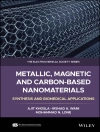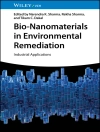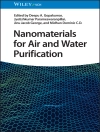Now in its updated second edition, this book describes emerging chiral environmental pollutants and their importance in environmental and human toxicology, as well as enantiomer selective separation and analytical methods. Compared to the first edition from 2001, the book has been completely restructured and a wealth of new material has been added to account for new developments. The book reports on the modern enantiomer selective separation methods, including enantio-selective chromatography techniques, which have even been successfully tested in space during the ESA Rossetta mission.
The authors clearly outline why the topic of chiral environmental pollutants has become even more important: many new chiral compounds have been released in recent years (e.g. as new pharmaceuticals or agrochemicals), and traces of these compounds can now be found in the environment. The authors explain that (and how) chirality can be a very important feature for the bioactivityof anthropogenic pollutants.
In this book, readers find an introduction to the topic, including all important aspects, from the introduction of new enantiomer selective analytical methods, and of emerging chiral environmental pollutants, to aspects on environmental and human toxicology and exposure, risk assessment, and aspects on climate change as well as other new aspects on chirality in the environment. The book is thus a must-read for everybody working in the field of chiral environmental pollutants, but it is also beneficial for teaching purposes in specialized post-graduate courses in advanced analytical chemistry, pharmaceutical analytics, or environmental chemistry.
Inhaltsverzeichnis
Introduction.- Criteria for the selection of a proper enantiomer selective analytical method.- Enantiomer selective high- and ultra-high performance liquid chromatography.- Enantiomer selective electrophoresis and electrochromatography.- Enantiomer selective high-resolution gas chromatography (es HRGC).- Other methods for the elucidation of molecular structures and mechanistic details of enantiomers.- Quality control and evaluation criteria for enantiomer selective separation methods in environmental sciences.- Enantiomer specific fate and behaviour of chiral contaminants.- Source Characterization and Contamination.- Chirality in environmental toxicity and fate assessments.- Perspectives.
Über den Autor
Roland Kallenborn is a Professor of Organic Analytical Chemistry, Organic Environmental Chemistry at the Faculty of Chemistry, Biotechnology and Food Sciences (KBM) from the Norwegian University of Life Sciences (NMBU) and holds an Adjunct Professor position at the University Center in Svalbard (UNIS). As an environmental chemist, his mains research focuses on method development for identification, characterisation and mitigation of organic environmental pollutants (including contaminants of emerging concern and transformation products), and on elucidation of pollutant profiles in urban agriculture, food processing and Arctic environments. He applies modern trace analytical methods in an interdisciplinary context in his research strategies. Professor Kallenborn is author/co-author of 120 peer reviewed publications, 12 books (author, chapter author and editor), 20 contract reports, 10 popular science papers and 250+ presentations (poster/ oral) at international conferences andseminars. He serves as editor/ editorial board member for the Journals “Current Chromatography”, “Fresenius Environmental Bulletin”, “Ecotoxicology and Chemistry”, “Environmental Science and Pollution Research” and “Chemosphere”.
Heinrich Hühnerfuss is a Professor Emeritus at the Department of Chemistry of the University of Hamburg, Germany, where he started his studies in 1963, and received his Ph. D. in 1971. His main research interests include ecotoxicology, biota, water and sediment analyses, remote sensing and characterization of anthropogenic and biogenic monolayers at the air/water interface. Throughout his career, Professor Hühnerfuss has actively contributed to these fields by publishing +200 scientific articles and books.
Hassan Y Aboul Enein is a Professor Emeritus at the Pharmaceutical and Medicinal Chemistry Department, National Research Center in Cairo, Egypt. He was the Head of the Pharmaceutical Analysis Laboratory at King Faisal Specialist Hospital and Research Centre, Riyadh, Saudi Arabia. Professor Aboul-Enein is the author and coauthor of 1100+ refereed articles, 48 book chapters and 365 conference presentations. He is also authored and edited 8 books in the field of analytical chemistry. He is a Member of the World Health Organization (WHO) advisory panel in International Pharmacopoeia and Pharmaceutical Preparations and a Fellow of the Royal Society of Chemistry (UK).
Imran Ali is a Professor at Jamia MIllia Islamia Central University, New Delhi, India. He is a world recognized academician and researcher with 425+ scientific publications including patents, books, book chapters, research papers, technical reports and conference presentations. His work has been highly cited with a h-index of 80 and i10-index of 255. His research areas include chiral pollutants, nanotechnology for water treatment, bioanalytical and medicinal chemistry. He is a leading researcher in chiral pollutants and nanotechnology. Based on his international recognition and high citation, Prof. Ali is designated as fellow and chartered chemist by the Royal Society of Chemistry, London UK. His books and papers are being used as reference sources all over the world. The methods and technologies developed are also being used by many industries.












